英美概况2
- 格式:doc
- 大小:114.50 KB
- 文档页数:9
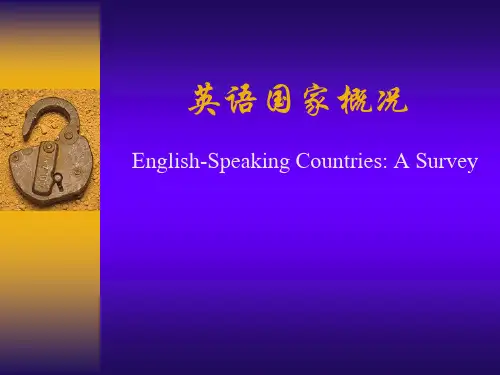
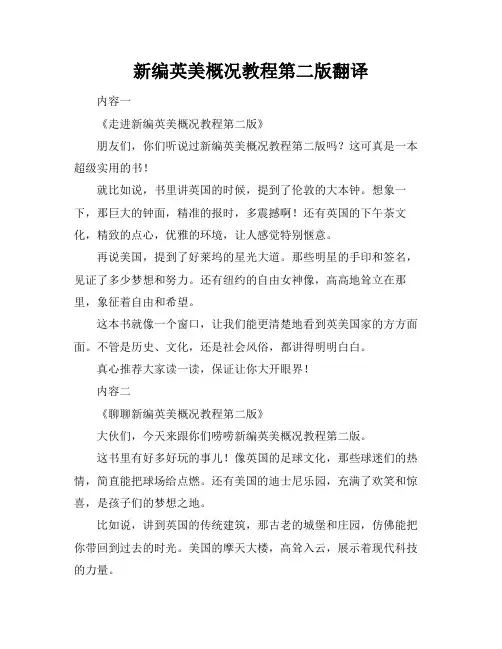
新编英美概况教程第二版翻译内容一《走进新编英美概况教程第二版》朋友们,你们听说过新编英美概况教程第二版吗?这可真是一本超级实用的书!就比如说,书里讲英国的时候,提到了伦敦的大本钟。
想象一下,那巨大的钟面,精准的报时,多震撼啊!还有英国的下午茶文化,精致的点心,优雅的环境,让人感觉特别惬意。
再说美国,提到了好莱坞的星光大道。
那些明星的手印和签名,见证了多少梦想和努力。
还有纽约的自由女神像,高高地耸立在那里,象征着自由和希望。
这本书就像一个窗口,让我们能更清楚地看到英美国家的方方面面。
不管是历史、文化,还是社会风俗,都讲得明明白白。
真心推荐大家读一读,保证让你大开眼界!内容二《聊聊新编英美概况教程第二版》大伙们,今天来跟你们唠唠新编英美概况教程第二版。
这书里有好多好玩的事儿!像英国的足球文化,那些球迷们的热情,简直能把球场给点燃。
还有美国的迪士尼乐园,充满了欢笑和惊喜,是孩子们的梦想之地。
比如说,讲到英国的传统建筑,那古老的城堡和庄园,仿佛能把你带回到过去的时光。
美国的摩天大楼,高耸入云,展示着现代科技的力量。
而且啊,书里的图片也特别好看,让你一下子就能感受到英美国家的魅力。
反正我读了之后,对英美有了更深的了解,你们也赶紧来看看吧!内容三《新编英美概况教程第二版的魅力》朋友们,新编英美概况教程第二版可太有魅力啦!举个例子,书里讲美国的音乐,从摇滚到流行,每一种风格都有它独特的故事。
像猫王的激情演唱,迈克尔·杰克逊的惊艳舞步,都让人陶醉其中。
还有英国的文学,像莎士比亚的戏剧,那精彩的情节和深刻的寓意,一直流传至今。
再比如,讲英国的美食,炸鱼薯条虽然简单,却有着独特的味道。
美国的汉堡包,快捷又美味。
这本书就像是一个宝藏,里面藏着无数关于英美国家的精彩。
快来一起探索吧!内容四《感受新编英美概况教程第二版》大家好呀!今天想跟你们分享一下我对新编英美概况教程第二版的感受。
这书真的让我有种身临其境的感觉。
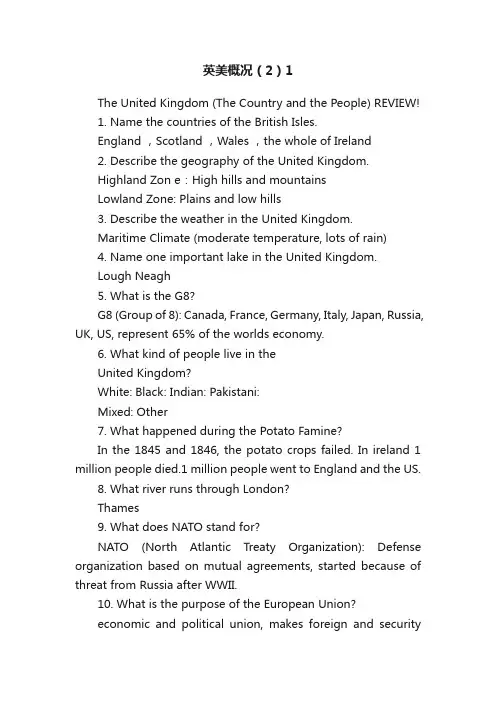
英美概况(2)1The United Kingdom (The Country and the People) REVIEW!1. Name the countries of the British Isles.England ,Scotland ,Wales ,the whole of Ireland2. Describe the geography of the United Kingdom.Highland Zon e:High hills and mountainsLowland Zone: Plains and low hills3. Describe the weather in the United Kingdom.Maritime Climate (moderate temperature, lots of rain)4. Name one important lake in the United Kingdom.Lough Neagh5. What is the G8?G8 (Group of 8): Canada, France, Germany, Italy, Japan, Russia, UK, US, represent 65% of the worlds economy.6. What kind of people live in theUnited Kingdom?White: Black: Indian: Pakistani:Mixed: Other7. What happened during the Potato Famine?In the 1845 and 1846, the potato crops failed. In ireland 1 million people died.1 million people went to England and the US.8. What river runs through London?Thames9. What does NATO stand for?NATO (North Atlantic Treaty Organization): Defense organization based on mutual agreements, started because of threat from Russia after WWII.10. What is the purpose of the European Union?economic and political union, makes foreign and securitypolicies, has a bank.UNIT3 History of the United KingdomQUIZ!1. Name two of the famous authors listed in the vocabulary.William Shakespeare Thomas More2. What is the name of the society that used meetings, lectures, and research (not revolution) to inform people of their democratic socialist ideas?The Fabian Society3. In what war did Britain fight against Russia with Turkey and FranceCrimean War4. Who was England’s first female prime minister?Margaret Thatcher5. What happened on Black Wednesday?1992: The UK was forced to withdraw the Pound from the European Exchange Rate Mechanism, costing citizens billions of pounds.6. What is the name of the major religion in the UK?Christianity Catholicism7. What happened in the Gunpowder Plot?An attempt to kill king James ⅠREVIEW!1. Name one prehistoric structure built by man in the UK Stonehenge Silbury Hill2. Which man led the Roman invasion of Great Britain around 55 B.C.?Julius Caesar3. During the 100 Years War, what woman helped France beat Great Britain?Joan of Arc,4. Which monarch began the Church of EnglandKing Henry VIII5. Name 3 important writers who gained fame during the “Age of Glory”.Thomas More William Shakespeare John Milton6. What happened during the Gunpowder Plot?7. Name 4 problems with the government listed in the Petition of Rights.Taxation without parliamentary consent,Forced loans,Arbitrary arrest,Interference with property rights, Exemption of officials from due process8. Who were the participants in the Crimean War?French ,Turkey ,Russia ,Great Britain9. What is the IRA?The IRA (Irish Republican Army) sought to gain independence from Great Britain and reunite the Republic of Ireland with Northern Ireland.10. Who is Margaret Thatcher?England’s first female prime ministerUNIT4-5A Constitutional Monarchy:The Queen and ParliamentREVIEW!1. What is the name of the UK’s system of governmentA Constitutional Monarchy and a parliamentary democracy2. What are the three parts of Parliament?The Crown ,House of Lords, House of Commons3. Where does Parliament meet? Meets in Westminster Palace4. Name 3 responsibilities of the Queen1. Summons and dismisses parliament2. Acts as head of the judiciary (courts)3. Commander in Chief of the military4. Leader of the Churches of England and Scotland5. Agrees to bills6. Leads the opening of Parliament7. Declares war8. Makes peace9. Completes treaty agreements with foreign states5. Name 4 responsibilities of ParliamentPass billsV ote on taxesV ote on government spending ?Examine policiesExamine administration ?Debate political issues6. What is the Shadow Cabinet? 20 members ,appointed by Prime Minister7. What does the House of Lords do?Not much powerNow considered a place ofdiscussionDebates issues of the day Improves bills that were not correctly thought out by the HoC Highest Court of Appeals in the UK 8. Where do the members of the House of Commons come from? Members Elected by the people9. True or False. Scotland, Wales, and N. Ireland have their own parliamentsT10. Who is the current Prime Minister of Great Britain?David Camero11. Who is the leader of the central government?David Camero12. What are the beliefs held by the Labour Party and the Conservative Party?The Whigs Became the Labour PartyTheir Beliefs:Government should supervise industryEqual distribution of wealthEqual opportunityThe T ories Became the Conservative PartyTheir Beliefs:Private enterpriseMinimal state regulationPrivate ownership ofbusiness with somegovernment controlGoverning class with natural rights and privileges13. N ame 3 principles of the “Rule of Law”.Everyone must follow the law.Law and order is kept by state institutions.The courts are free from political pressures.Legal compensation is provided to citizens.All people are equal before the law 14. What is the lowest level of the English criminal court system? Magistrates’Courts15. What are the 3 sources of law? English common law: based on lawdeveloped over the centuries and unchanged.Statute Law: formally written laws passed by either the Westminster or Scottish Parliaments.European Union Law: mostly economic and social matters. Ifthe EU law clashes with either the statute or common law, EU law will be applied.Uint5-6British EconomyREVIEW!1. Explain Keynesian Demand ManagementA economic theory that advocate government intervention designed toincrease employment and stimulate business activity.2. Name the 5 major British IndustriesEnergy, Agriculture, Manufacturing, Transportation and Communication, Finance and Trade3. Today, are more companies private or public?Private4. When did Great Britain become so economically powerful? During 1800s industrial revolution5. Name 3 social services provided by the government/- National Health Service- free health care to all citizens- Nationwide Education- free education to everyone- Slum Clearance- clean up the rundown, broken, dirty areas - Expand low - rent housing- to provide houses for the poor - Social Security- if there’s a need, money for children throughmoney for retired people.6. Who pays for the social services?Tax payers7. True or False: Private doctors are separate from NHS doctors.F8. After what major event did the British economy begin to slow down?World War II10. What is the name of the organization many employers belong to, that is also closely linked to the Conservative Party? CBI (Confederation of British Industry)UNIT8-9 Religion Education(没有?)英国小结Quiz!1.What does NATO stand for.。
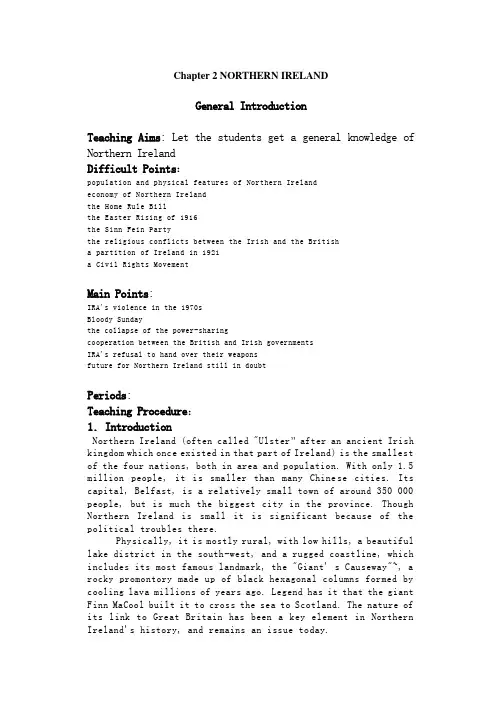
Chapter 2 NORTHERN IRELANDGeneral IntroductionTeaching Aims: Let the students get a general knowledge of Northern IrelandDifficult Points:population and physical features of Northern Irelandeconomy of Northern Irelandthe Home Rule Billthe Easter Rising of 1916the Sinn Fein Partythe religious conflicts between the Irish and the Britisha partition of Ireland in 1921a Civil Rights MovementMain Points:IRA's violence in the 1970sBloody Sundaythe collapse of the power-sharingcooperation between the British and Irish governmentsIRA's refusal to hand over their weaponsfuture for Northern Ireland still in doubtPeriods:Teaching Procedure:1.IntroductionNorthern Ireland (often called "Ulster” after an ancient Irish kingdom which once existed in that part of Ireland) is the smallest of the four nations, both in area and population. With only 1.5 million people, it is smaller than many Chinese cities. Its capital, Belfast, is a relatively small town of around 350 000 people, but is much the biggest city in the province. Though Northern Ireland is small it is significant because of the political troubles there.Physically, it is mostly rural, with low hills, a beautiful lake district in the south-west, and a rugged coastline, which includes its most famous landmark, the "Giant' s Causeway"~, a rocky promontory made up of black hexagonal columns formed by cooling lava millions of years ago. Legend has it that the giant Finn MaCool built it to cross the sea to Scotland. The nature of its link to Great Britain has been a key element in Northern Ireland's history, and remains an issue today.2.Detailed study of this partNorthern Ireland has an active cultural life with many theatres,restaurants, pubs and museums: its best known poet, Seamus Heaney,won the Nobel Prize for literature in 1995. Film-maker Neil Jordan won an Oscar for the "Best Original Screenplay” in 1992 with his film The Crying Game. Van Morrison is an internationally famous pop musician. Brian Friel4 is a playwright whose stageplays are acclaimed in London and Dublin as well as further afield.The Northern Ireland economy has its problems, partly as a result of the troubles discouraging investment, partly as a result of its peripherality in relation to the UK. Its wealth per head is the lowest of any UK region. Nevertheless living costs are also comparatively low, and a standard of living is possible for those of middle to upper incomes which many Londoners might envy. Industrial companies there include the aircraft manufacturers, Shorts, who build small commuter aircraft, as well as parts for other manufacturers such as Boeing, and the UK's largest shipbuilders, Harland and Woolf.This chapter will concentrate on the political problems of Northern Ireland, because unfortunately that is what is best knownHistoryabout it, though often not well understood. However, you should remember that it is a place where ordinary life continues, to which the troubles are an addition, rather than the main preoccupationof everyday life. Apart from the troubles, crime is very low, and even including political violence the murder-rate is much lower than in most American cities. Also the problems are mainly concentrated in particular areas, (where the troubles cannot be ignored for long, and where everyone would know a victim), but away from these places they might almost be forgotten, at least until the evening newspaper is delivered, or an armoured car drives by.However, there was a problem. The majority of Irish people were descendants of the original Celtic people who inhabited the British Isles before the Romans arrived 2 000 years ago. Ireland was not invaded by the Romans, or settled by the Anglo-Saxons who followed them into Britain, thus they were ethnically distinct from the majority of British people. Adding to this difference was religion: most Irish people remained Catholics, while most British people had become Protestants. But in one part of Ireland this was not, and is not, the case. In the seventeenth century, the English government, trying to increase its control of Ireland, encouraged people from Scotland and Northern England to emigrateto the troublesome north of Ireland. As a result the northeastern part of Ireland gained a population who saw themselves differently from the rest of the Irish people. They thought of themselves as British, and wished to remain a part of the British state. Also, they were Protestants. In 1921 the idea of being a part of an independent Irish State, where most people were Catholic, did notUntil 1921 the full name of the UK was "The United Kingdom of Great Britain and Ireland", not only "Northern Ireland", because the whole island of Ireland was politically integrated with Great Britain, and had been since 1801, while Britain's domination of the Irish dated back centuries even before that date. But Irish desires for an independent Irish state were never lost, and one of the key issues in late nineteenth century British politics was a campaign in parliament for what was called "home-rule" Irish political control of Irish affairs. The Home Rule Bill5 was finally passed in 1914, but the process was overtaken by the First World War and was suspended for the duration of the war.Along with the political campaign for home-rule there were groups who followed a more direct method of pursuing Irish independence, engaging in guerilla or terrorist activities against British institutions and the British military forces. During the first World War and immediately after, this activity increased, sometimes brutally suppressed by British forces. The Easter Rising of 1916' was the most spectacular event, in which the rebels took over Dublin's Post Office, forcing the British to retake it by military means. The leaders of the rebellion were executed. In 1919 a group calling itself the IRAs (Irish Republican Army) expanded the fighting. In the end the conflict became too great to ignore, and as the Sinn Fein ("Ourselves Alone") party9, who were supporters of the Irish terrorists (or freedom-fighters, depending on your point of view), gained most of the Irish seats in the British parliament, Irish independence became inevitable.appeal. On the other hand they could not "go home"-- Ireland wasThe Troublestheir home: they had been there 250 years or more. They had shown in 1913 that they would not accept union with Ireland by organising a show of force, and put 100000 armed men in the streets of Northern IrelandFaced with these conflicting demands the British government chose a compromise and organised a partition of Ireland. The southern 26 counties would form an independent "free state", while the 6 north-eastern counties would remain a part of the UK. This is what happened in 1921, bringing to an end 700 years of British rule in southern Ireland.Unlike the other nations in the UK, Northern Ireland was given its own Parliament to deal with Northern Irish internal affairs, based at Stormont, just outside Belfast. The problem was that just as Ireland had not been purely "Republican" (for an independent Irish Republic) so in the 6 northern counties the population was not purely "Loyalist”or "Unionist" (for union with Great Britain, loyal to the British Crown). Nearly 40% of the populations were Catholic Irish, many of whom resented the North's separation from the south. To worsen the situation, the Protestants, being the majority, controlled the local democratically elected parliament, and used that power to support their own economic and social dominance in the province. Catholics found it harder to get jobs, or to benefit from social programmes such as public housing. Understandably resentment grew, and the armed conflict known as the "troubles" developed.Following the example of Black Americans, in the 1960s Catholics in Northern Ireland began a Civil Rights Movement, campaigning for equality, often marching in the streets. Groups of Protestants began to organise counter-demonstrations, and e out. Protestant mobs attacked catholic areas. The police (The Royal Ulster Constabulary, RUC) were overwhelmed by the fighting, and the Northern Irish Prime Minister asked London for soldiers to help restore order. In 1969,the first British soldiers were see n on Northern Irish streets. They have been there ever since.They came first to protect the Catholic people, and news film of the time shows them being offered cups of tea by grateful Catholics, however, the longer they stayed, the more they were seen as the symbol of British rule in Northern Ireland. The IRA at this time split. The Official IRA thought enough progress had been made that they could concentrate on a political process, and run candidates for elections, but a strong faction felt that armed force was the only way to get the British out, and separated from the officials, calling themselves the "Provisional IRA". It is this group which has continued the conflict for the last 25 years, and it is them that are usually referred to by talk about the IRA.In the early 1970s the IRA carded out a campaign of bombing and shooting, usually targeting the security forces, but often bombing city centres. Usually they gave warnings, but not always. The British Security forces were strengthened, with up to 20 000 soldiers, and 10 000 armed police in the province. They were forced to patrol in bullet-proof armoured cars, and to fortify police-stations and barracks, always being under threat of the IRA's activities. The Protestants formed their own illegal "paramilitary" groups and took revenge on Catholics, often murdering individuals at random. Catholics in mainly Protestant areas, and Protestants in mainly Catholic areas were threatened, and sometimes their houses burned down, causing each to flee. The result is that now Northern Irish cities are "ghettoised" into exclusively Protestant and exclusively Catholic areasn. As their children also attend separate schools the two communities hardly mix at all. In 1971 the Northern Irish government took the desperate step of imprisoning terrorist suspects from both sides without trial, a policy known as "internmentm3. This suspension of civil fights caused anger on both sides, and, if anything, intensified the conflict~4 (The policy was ended in 1975, and is now seen as a major mistake in the handling of the crisis).In the following year, 1972, 468 people were killed in Northern Ireland, the worst year of the troubles. These included 13 Catholics who had been taking part in a peaceful (though banned) civil rights ma rch. They were shot dead by British soldiers. This was a key event in strengthening Catholic opposition to the British presence. This day has now been mythologised as "Bloody Sunday”s, an important symbol of British oppression.While attempting to maintain normality through a massive and increasingly effective security presence the government looked for political solutions to the troubles. In 1973, an agreement was reached between the main political parties in Northern Ireland, and importantly, the British and Irish governments. This led to a new form for the Northern Irish Parliament, with a Power-Sharing mechanism~6 to allow the minority Catholic population political influence. This, especially the Irish involvement, outraged the Protestant majority, leading to a massive and prolonged strike by the Protestant workforce, eventually leading to the collapse of the power-sharing group.At this point the British government decided that the Northern Irish parliament could not govern the province effectively, and suspended it, replacing it with "direct-rule" from London. This is still the situation today. The IRA's bombing campaign extended to the mainland of Great Britain, but even so the troubles settled down to a peculiar level of semi Britain, but even so the troubles settled down to a peculiar level of semi acceptability. People had got used to it. Both sides continued the conflict, but the British forces kept the scale down to a lower level than in While attempting to maintain normality through a massive and increasingly effective security presence the government looked for political solutions to the troubles. In 1973, an agreement was reached between the main political parties in Northern Ireland, and importantly, the British and Irish the early 1970s, and through the late 1970s and the 1980s the death rate averaged around 90 per year. It didn't get worse, but neither could anyone see an end to it. A visitor to Belfast from England in the 1980s found a city which looked very much like home, but then might be shocked by seeing a police patrol with two armed policemen (shocking in itself to the British, whose police do not carry guns) protected by perhaps ten heavily armed British soldiers walking on both sides of the street ahead of and behind the policemen,looking through their guns’ telescopic sights for any sign of danger. Meanwhile the people of Belfast would be walking amongst them, doing their shopping, taking their children to school, apparently hardly noticing the military force in their midst, the armoured car cruising by. Life went onTowards a Solution?The British government still felt that involving the Southern Irish in Northern Irish affairs was the right way to proceed despite the disaster of power-sharing in the 1970s. It should not be thought that the Irish government supports the IRA: they do not (following independence in 1921 a civil war was fought between the Irish government's forces and the IRA which the Irish government won, executing 3 times as many IRA men as the British ever had). The IRA is thus an illegal organization there too, and the British and Irish governments work together on a range of security matters. Nevertheless, the Irish do seek to protect the rights of Catholics in Northern Ireland, and it is still a part of the Irish constitutionthat they claim sovereignty over the 6 northern counties also, which makes the Protestants of the north suspicious of their intentions. However, in 1985 the Anglo-Irish agreement was signed between the two governments, giving the Irish a right to consultation on Northern Irish matters. Again, huge Protestant protest followed with the "Ulster says No" campaign. This time the government did not give in and the Anglo-Irish agreement is still in effect. A series of big bombs in London in the late 1980s and early 1990s increased pressure on the British government to come up with a solution.Through the actions of a constitutional Nationalist politician, John Hume, leader of the SDLP, and the leader of Sinn Fein, Gerry Adams, in August 1994, to most peoples' surprise, the IRA declared a ceasefire. Protestant paramilitary groups did the same. Everyone breathed a sighof relief, but the problem was not solved, though for the moment no one was being killed.The problem lay in the "commitment to peaceful methods" aspectof the possible talks. The British government felt that to make the Sinn Fein presence at the talks acceptable to the Unionist politicians, the IRA should hand over at least some of its weapons to show its seriousness. The IRA saw this as surrender, and refused. Time went on with various unsuccessful attempts to get over this hurdle. After 18 months of peace, the IRA's patience broke. They ended their ceasefire and set off two explosions in London, killing a number of people. At the moment of writing (April 1996) this is how the situation stands. Brit ain has offered Sinn Fein a place at talks planned to begin in June, if the IRA will declare another ceasefire. They have not done so. Province-wide elections are planned under a complex formula to ensure a wide rangeof representation on the body which will carry out these talks, in an attempt to give them legitimacy. Without the participation of Sinn Fein and the IRA it is hard to see them succeeding. Northern Ireland is poised on the brink--a new peaceful future, or a return to the violence that has claimed 3150 lives so far.3. exercises: do the exercises on page 27-30。
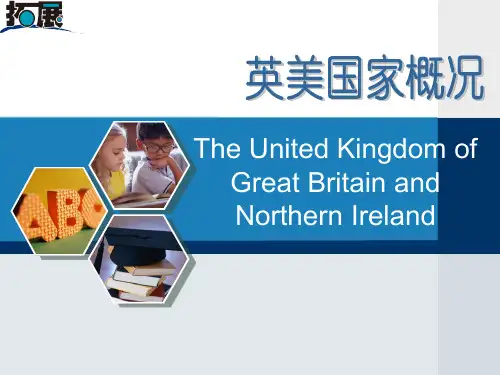
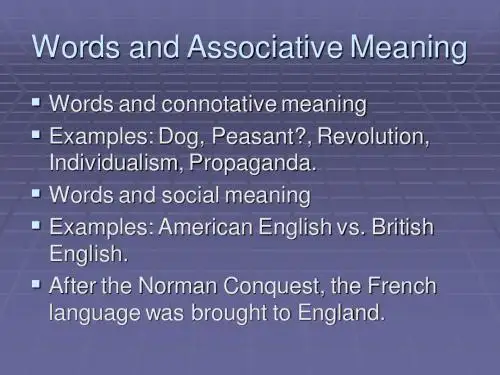
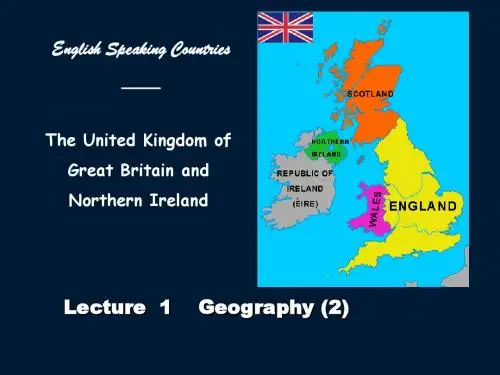
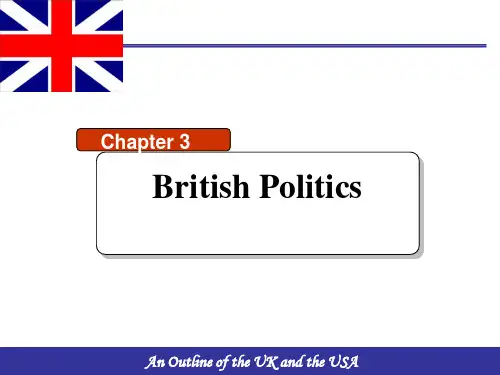
![英美概况(第二版)UK chapter 3 British Politics[精]](https://uimg.taocdn.com/eedcd4daaeaad1f346933f46.webp)
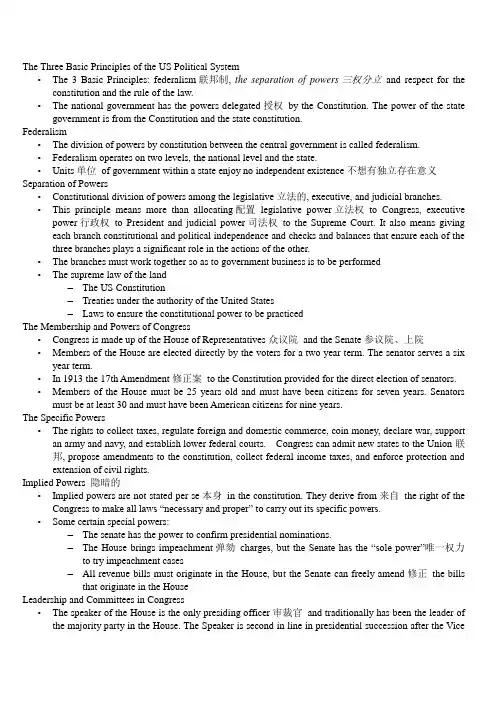
The Three Basic Principles of the US Political System•The 3 Basic Principles: federalism联邦制, the separation of powers三权分立and respect for the constitution and the rule of the law.•The national government has the powers delegated授权by the Constitution. The power of the state government is from the Constitution and the state constitution.Federalism•The division of powers by constitution between the central government is called federalism.•Federalism operates on two levels, the national level and the state.•Units单位of government within a state enjoy no independent existence不想有独立存在意义Separation of Powers•Constitutional division of powers among the legislative立法的, executive, and judicial branches.•This principle means more than allocating配置legislative power立法权to Congress, executive power行政权to President and judicial power司法权to the Supreme Court. It also means giving each branch constitutional and political independence and checks and balances that ensure each of the three branches plays a significant role in the actions of the other.•The branches must work together so as to government business is to be performed•The supreme law of the land–The US Constitution–Treaties under the authority of the United States–Laws to ensure the constitutional power to be practicedThe Membership and Powers of Congress•Congress is made up of the House of Representatives众议院and the Senate参议院、上院•Members of the House are elected directly by the voters for a two year term. The senator serves a six year term.•In 1913 the 17th Amendment修正案to the Constitution provided for the direct election of senators.•Members of the House must be 25 years old and must have been citizens for seven years. Senators must be at least 30 and must have been American citizens for nine years.The Specific Powers•The rights to collect taxes, regulate foreign and domestic commerce, coin money, declare war, support an army and navy, and establish lower federal courts. Congress can admit new states to the Union联邦, propose amendments to the constitution, collect federal income taxes, and enforce protection and extension of civil rights.Implied Powers 隐暗的•Implied powers are not stated per se本身in the constitution. They derive from来自the right of the Congress to make all laws “necessary and proper” to carry out its specific powers.•Some certain special powers:–The senate has the power to confirm presidential nominations.–The House brings impeachment弹劾charges, but the Senate has the “sole power”唯一权力to try impeachment cases–All revenue bills must originate in the House, but the Senate can freely amend修正the bills that originate in the HouseLeadership and Committees in Congress•The speaker of the House is the only presiding officer审裁官and traditionally has been the leader of the majority party in the House. The Speaker is second in line in presidential succession after the VicePresident副总统.•The Vice President is the presiding officer and is called the president of the Senate. He seldom appears in the Senate chamber堂、会所in this role unless it appears that there might be tie vote in the Senate.He casts the tiebreaking vote. To deal with day to day business, the Senate chooses the president pro tempore.How a Bill Becomes a Law•When bills are introduced引进, they are sent to the appropriate committees by the Speaker of the House or the Senate majority leader.•The chair of the committee sends the bill to a subcommittee小组委员会where hearings听证会are held.•The subcommittee issues a report that is either favorable or unfavorable to the bill. Or it may report out an amended修正的or changed bill or rewrite the original bill.• A bill favorably reported out of a Senate committee is put on the calendar for floor action.•In the House bills must first go through the Rules Committee规则委员会, which decides when the full house will hear the bill.• A senator who wants to delay延期action on a bill or kill it may use a tactic策略called a filibuster阻挠议事行动. It can be cut off only through cloture讨论终结.•Then the bills are sent to the President.•If the President does not sign or veto否决a bill within ten days, the bill becomes law.•The bill is dead if Congress adjourns延期within this ten day period. This is known as a pocket veto 搁置否决权. Congress can override推翻the veto by a two thirds vote of both houses.•Lobbying游说is part of the citizen’s right to petition请愿government in the US. Now there are thousands of lobbyists游说者in Washington D.C. (mostly corporate/rich individual lobbyists).Their influence in making US policy is so great that some peopl e call them “the third house” of Congress. Notes•Standing Committees常务委员会: They are permanent ones to determine whether proposed legislation should be presented to the entire House or Senate for consideration.•Select Committees特别委员会: They are also known as special committees. They are temporary暂时的and are established to examine specific issues. They must be reestablished with each new Congress.•Conference Committees会议委员会: They deal with the differences in legislation that have been passed by each of both houses of Congress.•Joint Committees联合委员会: They have members from both houses, with the leadership rotating旋转between Senate and House members. They focus on issues of general concern to Congress and investigate problems but do not propose legislation.•Filibuster阻挠议事行动: It is a marathon马拉松式的speech that may go on for hours with the senators yielding the floor only to members who support his or her position. It can be cut off only through cloture.•Riders附文: Amendments修正案completely unrelated to the bill are called riders.•••The power of the state in the US is actually from_____•A: the central government•B: the state constitution•C: the US constitution•D: both B & C• D•The supreme law of the United States includes_____•A: the US Constitution•B: treaties under the authority of the United States•C: laws to ensure the constitutional power being practiced•D: all of the above• D•The terms of the senator and representative are _____ and _____ years respectively. •A: two, four•B: two, three•C: two, six•D: six, two• D•Which amendment provided for the direct election of senators?•A: the 16th Amendment (1913)•B: the 17th Amendment (1913)•C: the 18th Amendment (1919)•D: The 19th Amendment (1920)• B•Certain Presidential appointments must be approved by a majority vote in _____•A: Congress•B: the House•C: the Supreme Court•D: the Senate• D•All revenue国家收入or tax bills must be originated in ____?•A: the Cabinet•B: the House•C: the Senate•D: the Executive Office• B•Who is second in line in presidential succession?•A: The Speaker of the House•B: The Vice President•C: The president pro tempore临时总统•D: The leader of the majority party in the Senate• A•In the House, the power to decide when the full House will hear the bill is vested in _____? •A: the Rules Committee•B: the standing committee•C: Subcommittee•D: the select committee A。
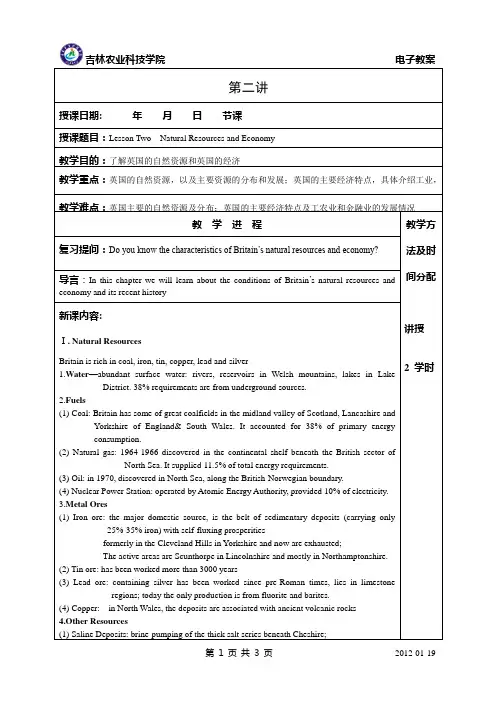
Colonization of North America(北美殖民)(1607-1776) 1. Indians: The “first Americans” Native American Originated from Asia Name Lived in tribes with kinship as the basis Good at decorative art Lived on hunting and farming
2. The Discovery of the New World Amerigo Vespucci • He first confirmed the fact that a new continent had been discovered. • The New World was named America to honor Amerigo Vespucci.
Why did the early settlers come to America? Opportunity It drew English merchants who dreamed of establishing great new estates out of the wildness. It drew carpenters, bakers, tailors and other skilled workmen who could not find job in England. It drew the poor and the homeless from farmlands and villages. It drew many English in search of religious freedom.
Reasons that drew people to America:(吸引人们移民到美国的原因) 1. in search of wealth 2. priests spreading Christianity 3. refuge for political dissenters 4. the thirst for adventure
The English Settlements In 1621, the puritans gathered in a large crop and the settlers fixed a date to celebrate their harvest in order to express their thanks to God. This is the beginning of the holiday called Thanksgiving. Thanksgiving Day:(美国是11月的第四个星期四,加拿大是10月的第二个星期一)
Thanksgiving Day • The 4th Thursday of November • A purely American holiday • Origin – The Indians taught the Englishmen how to plant pumpkins, beans and corn. – A celebration was held to give thanks to God.
3. Colonial Era(殖民时代) • America has always appeared to be not one culture, but a mixture of different cultures. So it is often called “the melting pot”. • In the colonial period, this mixture of contrasting traditions was already taking shape. The intolerant idealism of Massachusetts existed beside the tolerant idealism of Rhode Island, the ethnic variety of Pennsylvania and the practical commercial agriculture of Virginia. • Most American colonists worked on small farms. These were worked by blacks under the system of slavery , which had evolved slowly since 1619, or by free Englishmen who contracted to work without pay for several years in return for their passage to America. • By 1770, several small but growing urban centers had emerged, each supporting newspapers, shops, merchants and craftsmen. • Unlike most other nations, the United States never had a feudal aristocracy. Land was plentiful and labor was scarce in colonial America, and every free man had an opportunity to achieve economic independence, if not prosperity.
Seven Years’ War : • 1756 - The Seven Years' War begins when England declares war on France.
Seven Years’ War Background: • The war involved all major powers of Europe: Prussia, Great Britain (with British Colonies in North America) and Hanover were pitted against Austria, France, Russia, Sweden, and Saxony. • The most tangible outcome of the war was the end of France’s power in the Americas (having only four islands left to them) and the emergence of Great Britain as the most powerful colonial power in the world. • Intolerable Acts’ background • In 1773, a group of patriots responded to the tea tax by staging the “Boston Tea Party”: disguised as Indians, they boarded British Merchant ships and tossed 342 crates of tea into Boston harbor. Parliament then passed the “Intolerable Acts ”(more British soldiers were sent to the port of Boston)
4. The American War of Independence (独立战争) • What were the causes of the War of Independence? (原因)
Britain’s colonial policy – The economy in the 13 colonies developed very fast – The British government was to bring the development under control and to collect more taxes from the colonies. – “No taxation without representation”
How was the War of Independence started? The “Boston Tea Party” In 1773, when ships of tea reached Boston to be distributed, several dozen Boston residents boarded the ship at night and threw $75,000 worth of tea into the harbor. This came to be known as the “Boston Tea Party”. The start of the war In 1775, about 1,000 British soldiers were sent from Boston to seize the military supplies of the American militia. When they arrived at Lexington they were met by the armed militiamen. Suddenly a shot was fired and the War of Independence began.
The first Continental Congress (1774) 第一次大陆会议 • Date: September 1774 • Place: Philadelphia • Delegates: from 12 colonies except Georgia • Result: passed Declaration of Rights and Grievances
The second Continental Congress (1775) Date: May, 1775 Place: Philadelphia Result: The Congress founded a Continental Army under the command of George Washington. The Declaration of Independence